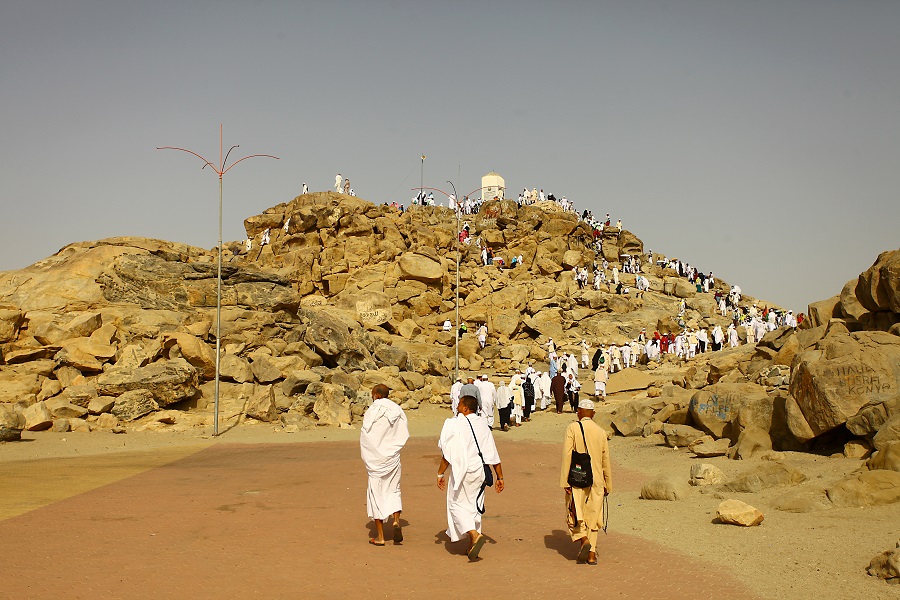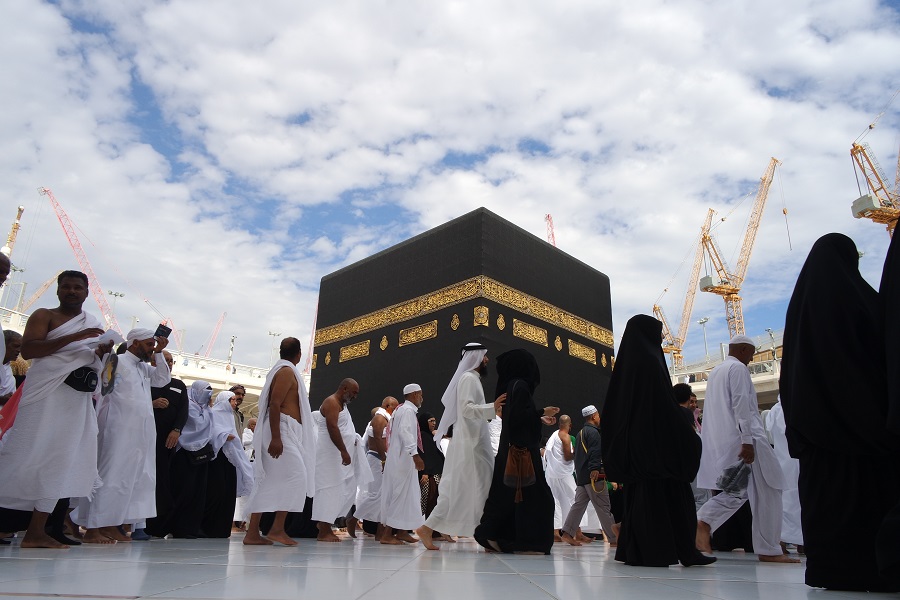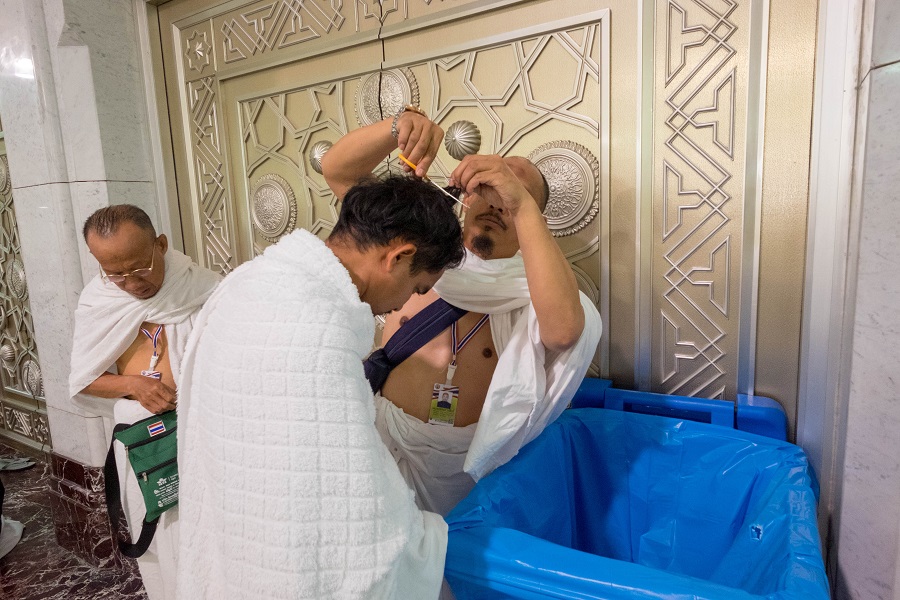Hajj and Umrah are Islamic pilgrimages, considered to be spiritually cleansing and incredibly rewarding acts. Both these pilgrimages help deepen a person’s understanding of the trials of Prophet Ibrahim, his wife Hajar and Prophet Muhammad. They also strengthen a believer’s connection with Allah. However the importance and pillars of Hajj and Umrah are a little different. Aspirants must be aware of these differences before embarking on each/one of these journeys.
Pillars of Hajj
Hajj is the most important pilgrimage is Islam that all Muslims are required to take at least once in their lifetime. It is mandatory to visit the holy Kaaba – the house of God and one of five pillars of Islam. Upon its completion, all past misdeeds are cleansed and one can reach Jannah (paradise). One should maintain strict guidelines while wearing Ihram clothes as one is going to enter the holy house of Allah. Both men and Women should follow these guidelines to avoid negative gazes.
There are four main pillars of Hajj:
1. Ihram: It involves cleansing oneself and declaring the intention and conviction to start the spiritual journey. Ihram must be assumed at the meeqats by performing Wudhu, wearing clean clothes, and declaring niyyah or intention followed by reciting specific prayers.
The Prophet said: “Deeds are according to intentions and every person will be rewarded according to his intention.”
2. Saee: Walking between al-Safa and al-Marwa is an ode to the struggle of Hagar, wife of Prophet Ibrahim, who walked up and down these hills seven times to find water for her infant son. Pilgrims must perform the same journey from the Hills of Safa to Marwa and back in the similar fashion and count as Hagar did.
From the Prophet’s statement: “Perform Sa’y for Allah has decreed that you perform Sa’y between as-Safa and al-Marwa.”
3. Waqfat ‘Arafah: The ritual of standing on Mount Arafah starts from the noon of the 9th day of Dhul-Hijjah and continues till the dawn of the 10th day. It is said that standing at any place during this stage is sufficient.
4. Tawaf al-Ifaadah: This stage begins after standing on Arafah to the end of one’s life. This is the action of circling seven times around the Kaaba in an anti-clockwise direction. One can try to touch, kiss or raise hands towards black stone for seeking forgiveness and a blissful life.
Pillars of Umrah
Like Hajj, Umrah is a ritualistic journey to Mecca. It can be performed at any time of the month or year, except at the time of Hajj rituals. It is also an act of spiritual cleansing and strengthening one’s connection with Allah through various rituals in the memory of Prophet Ibrahim, Hajar and Prophet Muhammad. It can be done in a much lesser time in contrast to the pilgrimage of Hajj.
The four pillars of Umrah are:
1. Ihram: In order to perform Umrah or Hajj, Muslims are to enter into a sacred state, wearing clean and simple clothing. This stage consists of certain prohibitions that are to be abided by every pilgrim for a successful journey.
2. Tawaf: In this step, pilgrims are to circle Kaaba (the house of God) seven times. It is known to be a demonstration of unity among the believers towards the worship of Allah as they travel in harmony around Kaaba. This is among the principal rites performed in the pilgrimage of Umrah and Hajj.
2. Saee: The two small hills, Safa and Marwa, are situated in the profound mosque of Mecca, Saudi Arabia. Saee in Umrah involves seven sacred circumambulations between the two hills. The pilgrims seek blessings and mercy from Allah. Also, it portrays the struggle one faces in everyday life, seeking motivation and courage from Allah to overcome it.
4. Tahallul: Upon the completion of the journey of Umrah, pilgrims are to perform certain activities to discontinue the ritualistic state of Hajj and Umrah. Men are to shave their heads while women must cut their hair a few inches shorter. Upon these acts, Muslims are freed from all the prohibitions of this pilgrimage journey. To perform the ritual correctly, one has to follow the rules for Halq and Taqseer which are different for men and women.
Besides different pillars of Hajj and Umrah, there are some more differences between the two pilgrimages. Hajj holds a higher religious importance than Umrah and is obligatory for every Muslim at least one time in his/her entire life. Also, Hajj takes place from 8th to 12th in Dhul-Hijjah, once a year, whereas Umrah can be performed at any time of the month or year, except at the time of Hajj.
The rituals are also different for Hajj and Umrah; Hajj begins the same way as Umrah — assuming Ihram, performing Tawaf, saying two Rakats, drinking Zamzam water and performing Saee. The Hajj rituals however do not end here, pilgrims continue towards Mina, while still in the state of Ihram for a few more rites.
At their core, both pilgrimages as well as the pillars of Hajj and Umrah, are extremely important in Islamic tradition, providing an opportunity to be Allah’s guest and reminding each Muslim of his/her role in the world.
Pillars of Hajj & Umrah FAQs
What are Hajj and Umrah?
Hajj and Umrah are Islamic pilgrimages, considered to be spiritually cleansing and incredibly rewarding acts.
What are the main pillars of Hajj?
There are four main pillars of Hajj — Ihram, Saee, Waqfat, Arafah and Tawaf al-Ifaadah.
What are the main pillars of Umrah?
There are four main pillars of Umrah — Ihram, Tawaf, Saee between Safa and Marwah, and Tahallul.
How is Umrah different from Hajj?
Umrah is a ritualistic journey to Makkah. It can be performed at any time of the month or year, except at the time of Hajj rituals.
How does the Hajj begin?
Hajj begins the same way as Umrah — assuming Ihram, performing Tawaf, saying two Rakats, drinking Zamzam water and performing Saee.
What is the state of Ihram?
Ihram is a holy state that one must enter before performing Hajj and Umrah.











